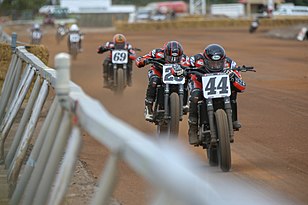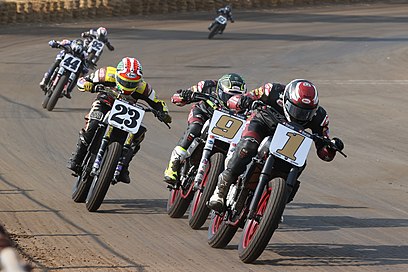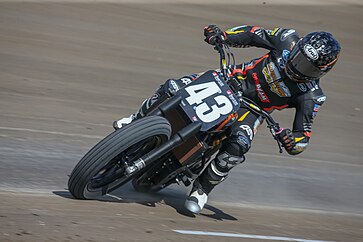
Motocross is a form of off-road motorcycle racing held on enclosed off-road circuits. The sport evolved from motorcycle trials competitions held in the United Kingdom.
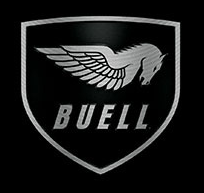
Buell Motorcycles is an American motorcycle manufacturer based in Grand Rapids, Michigan, United States. It was founded in 1983 by ex-Harley-Davidson engineer Erik Buell. Harley-Davidson acquired 49 percent of Buell in 1993, and Buell became a wholly owned subsidiary of Harley-Davidson by 2003. On November 17, 2006, Buell announced that it had produced and shipped its 100,000th motorcycle.

AMA Superbike Championship is an American motorcycle racing series that has been run every year beginning in 1976. For most of its existence it has been considered the premier motorcycle road racing series in the United States. It is sanctioned by the AMA American Motorcyclist Association since its inception, and the promotion of the series has been licensed to several organizations over the years. Since 2015 the series has been run and promoted by MotoAmerica, who also manage several other AMA professional road racing championships, including the popular 600cc Supersport class.
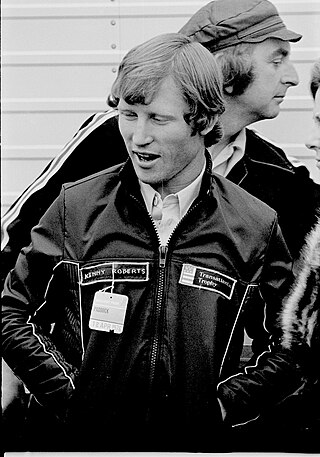
Kenneth Leroy Roberts is an American former professional motorcycle racer and racing team owner. In 1978, he became the first American to win a Grand Prix motorcycle racing world championship. He was also a two-time winner of the A.M.A. Grand National Championship. Roberts is one of only four riders in American Motorcyclist Association (AMA) racing history to win the AMA Grand Slam, representing Grand National wins at a mile, half-mile, short-track, TT Steeplechase and road race events.
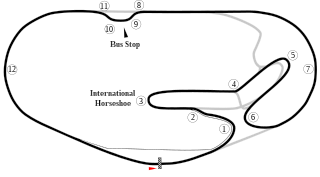
The Daytona 200 is an annual motorcycle road racing competition held in early spring at the Daytona International Speedway in Daytona Beach, Florida. The 200-mile (320 km) race was founded in 1937 when it was sanctioned by the American Motorcyclist Association (AMA). The original course used the beach itself before moving to a paved closed circuit in 1961. The Daytona 200 reached its zenith of worldwide popularity in the 1970s when the race attracted the largest crowds of any AMA race along with some of the top rated international motorcycle racers. The race is currently promoted by MotoAmerica and run in their middleweight Supersport Class. The race is typically held in early March.

Erv Kanemoto is an American former Grand Prix motorcycle mechanic and motorcycle race team owner. He was one of the most successful motorcycle racing tuners and race team crew chiefs of the 1970s through the early 2000s, working with motorcycle racers who won two national championships and six world championships. He is best known for his association with motorcycle racers Gary Nixon and Freddie Spencer.
Mert Lawwill is an American professional motorcycle racer, race team owner and mountain bike designer. He competed in the AMA Grand National Championship from 1962 to 1977. Lawwill is notable for winning the 1969 AMA Grand National Championship as a member of the Harley-Davidson factory racing team. After his motorcycle racing career, Lawwill became one of the top motorcycle racing frame designers and builders. Lawwill then used his experience as a motorcycle frame builder to become an innovative mountain bike designer, developing one of the first bicycle suspensions. He also developed prosthetic limbs for amputees. Lawwill was inducted in the Mountain Bike Hall of Fame in 1997 and the Motorcycle Hall of Fame in 1998.

Chris Carr is an American motorcycle dirt-track racer and seven-time winner of the A.M.A. Grand National Championship. He has also competed as a motorcycle road racer at the national level and was a motorcycle land speed world record holder.

Kelvin Carruthers is an Australian world champion Grand Prix motorcycle road racer and racing team manager. After his motorcycle riding career, he became race team manager for world championship winning riders Kenny Roberts and Eddie Lawson.
Yvon Duhamel was a French Canadian professional motorcycle and snowmobile racer. A six-time winner of the White Trophy, the highest award in Canadian motorcycle racing, he was one of the most accomplished motorcycle racers in Canadian motorsports history. His motorcycle racing career spanned the transition from the 60 horsepower four-stroke motorcycles of the 1960s, to the 100 horsepower two-stroke motorcycles of the 1970s. Duhamel was a versatile rider competing in numerous motorcycle racing disciplines including; trials, motocross, ice racing, drag racing, flat track racing and most prominently in road racing as a member of the Kawasaki factory racing team.
The AMA Motocross Championship (commercially known as Pro Motocross Championship) is an American motorcycle racing series. The motocross race series was founded and sanctioned by the American Motorcyclist Association (AMA) in 1972. The series is the major outdoor motocross series in the United States and is sanctioned by AMA Pro Racing and managed by MX Sports Pro Racing.

Calvin Rayborn II was a top American professional motorcycle road racer in the 1960s and early 1970s.

The Harley-Davidson XR-750 is a racing motorcycle made by Harley-Davidson since 1970, primarily for dirt track racing, but also for road racing in the XRTT variant. The XR-750 was designed in response to a 1969 change in AMA Grand National Championship rules that leveled the playing field for makes other than Harley-Davidson, allowing Japanese and British motorcycles to outperform the previously dominant Harley-Davidson KR race bike. The XR-750 went on to win the most races in the history of American Motorcyclist Association (AMA) racing.
Gavin Trippe was a motorcycle racing promoter, journalist, and publisher who was inducted to the Motorcycle Hall of Fame in 2005. He died following an automobile accident in California.
The AMA Supermoto Championship was an AMA Pro Racing-sanctioned Supermoto motorcycle racing series that ran from 2003 through 2009. AMA Pro Racing was a wholly owned subsidiary of the American Motorcyclist Association. An amateur national championship, known as AMA Supermoto and sanctioned by the American Motorcyclist Association as AMA Sports, was launched in 2013 with USA Supermoto as the new promoter.

MotoAmerica is the organization that promotes the AMA Superbike Series since 2015. Sanctioned by the American Motorcyclist Association (AMA) and the Fédération Internationale de Motocyclisme (FIM), it features eight classes of road racing: Superbike, Stock 1000, Supersport, King of the Baggers, Super Hooligan National Championship, Twins Cup, Junior Cup, and Mini Cup.

Brad Baker is an AMA Pro Flat Track Racer from United States who has competed in the Championship since 2009, winning the Grand National Singles Championship in his first full-time year. He also won the Grand National Championship in 2013.

The Harley-Davidson KR or KR750 was a 45.125 cu in (739.47 cc) displacement V-twin engine racing motorcycle made by Harley-Davidson from 1953 through 1969 for flat track racing. It was also used in road racing in the KRTT faired version. When the KR was first introduced, it dominated motorcycle racing in the United States. In 1970 it was replaced by the long-lived and US race-winning Harley-Davidson XR-750.
GNC1 was the premier class in the 2015-16 AMA Grand National Championship for professional motorcycle flat track racing in the United States.

Flathead motorcycles are a type of bike that was a standard for pre-war motorcycles, in particular US V-twins such as Harley-Davidson and Indian, some British singles, BMW flat twins and Russian copies thereof.
